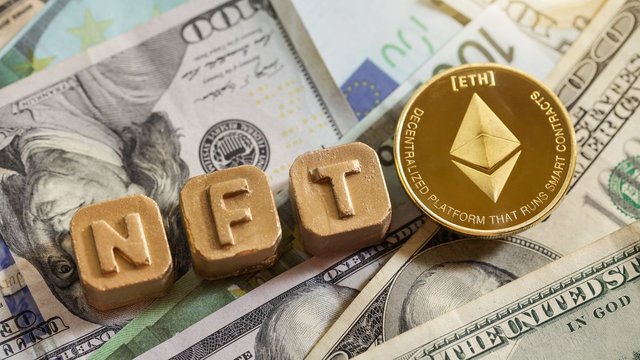Why is NFT 2.0 the Next Step from the Current NFTs?
In recent years, Non-Fungible Tokens (NFTs) have gained significant attention and have become a popular topic of discussion within the digital world. NFTs have revolutionized the way we perceive and interact with digital assets, allowing for unique ownership and provenance on the blockchain. While the first wave of NFTs brought forth a new era of digital ownership, NFT 2.0 represents the next step in the evolution of this technology. In this article, we will explore why NFT 2.0 holds immense potential and why it is poised to surpass its predecessor.
Enhanced Interoperability
One of the key advancements of NFT 2.0 is enhanced interoperability. Traditional NFTs exist on specific blockchain networks, limiting their compatibility and interaction with other platforms. However, NFT 2.0 aims to break these barriers by leveraging cross-chain capabilities. By utilizing interoperability protocols such as Polkadot or Cosmos, NFT 2.0 can transcend individual blockchains, enabling seamless transfer and interaction across various networks. This newfound interoperability opens doors for increased liquidity, wider adoption, and improved overall functionality.
Scalability and Reduced Environmental Impact
Another significant improvement offered by NFT 2.0 is scalability and reduced environmental impact. The current NFT ecosystem, built predominantly on Ethereum, has faced challenges with scalability and high gas fees during peak periods. NFT 2.0 aims to address these limitations by utilizing layer-two scaling solutions, such as Polygon or Optimism. These solutions alleviate congestion on the main blockchain and reduce transaction costs, making NFTs more accessible to a wider audience. Additionally, NFT 2.0 explores alternative consensus mechanisms, like Proof-of-Stake (PoS), which consume significantly less energy compared to the energy-intensive Proof-of-Work (PoW) used by Ethereum.
Enhanced Utility and Smart Contracts
NFT 2.0 introduces enhanced utility and smart contract capabilities. While the current NFTs primarily serve as collectibles or digital art pieces, NFT 2.0 expands its potential use cases. Through advanced smart contracts, NFT 2.0 enables programmable functionality, allowing for royalties, licensing agreements, and even dynamic content. For example, an NFT 2.0 representing a music album could automatically distribute royalties to the artist each time the NFT is sold or used in a commercial setting. This increased utility broadens the appeal of NFTs and encourages innovation in various industries.
Improved Security and Provenance
Security and provenance are crucial aspects of any digital asset, and NFT 2.0 aims to strengthen these elements further. By leveraging advancements in cryptographic techniques, NFT 2.0 provides enhanced security measures to protect the ownership and integrity of digital assets. Additionally, NFT 2.0 offers improved provenance, ensuring a transparent and verifiable history of ownership and transaction records. This aspect is particularly important in industries like art, where provenance plays a significant role in determining the value and authenticity of an artwork.
Community Governance and Consensus
NFT 2.0 introduces community governance and consensus mechanisms to empower token holders. Decentralized Autonomous Organizations (DAOs) allow NFT 2.0 communities to collectively make decisions regarding the development, management, and future direction of the platform. This democratic approach fosters a sense of ownership and inclusivity, where every participant has a voice. Community governance ensures that the platform evolves in a manner that aligns with the interests and values of its users, leading to a more vibrant and sustainable ecosystem.
Enhanced Metadata and Interactivity
NFT 2.0 introduces enhanced metadata and interactivity features, taking the concept of digital ownership to new heights. While traditional NFTs typically store basic information about the asset, NFT 2.0 expands on this by allowing for dynamic and interactive metadata. This means that an NFT can include real-time data, multimedia content, or even interactive elements that engage the owner and enhance the overall user experience. For instance, an NFT representing a virtual world could include interactive elements where users can explore and interact with the environment, creating a truly immersive and engaging digital experience.
Cross-Platform Integration
NFT 2.0 aims to integrate seamlessly across multiple platforms and applications. This interoperability enables NFTs to be utilized in various virtual worlds, gaming ecosystems, virtual reality platforms, and even within social media networks. With cross-platform integration, users can showcase their digital assets across different environments, increasing their visibility and potential for monetization. Additionally, cross-platform integration opens up opportunities for collaborations between different projects, fostering innovation and creating a more interconnected digital landscape.
Conclusion
NFT 2.0 represents a significant leap forward in the evolution of non-fungible tokens. With enhanced interoperability, scalability, utility, security, and community governance, NFT 2.0 sets the stage for a more inclusive, functional, and sustainable digital asset ecosystem. By leveraging advanced technologies and addressing the limitations of its predecessor, NFT 2.0 paves the way for exciting new possibilities in various industries, including art, play-to-earn gaming, music, and beyond.
